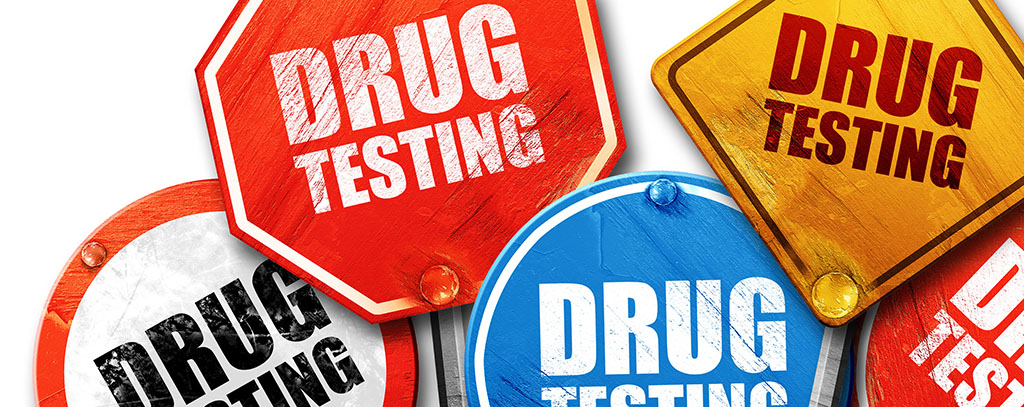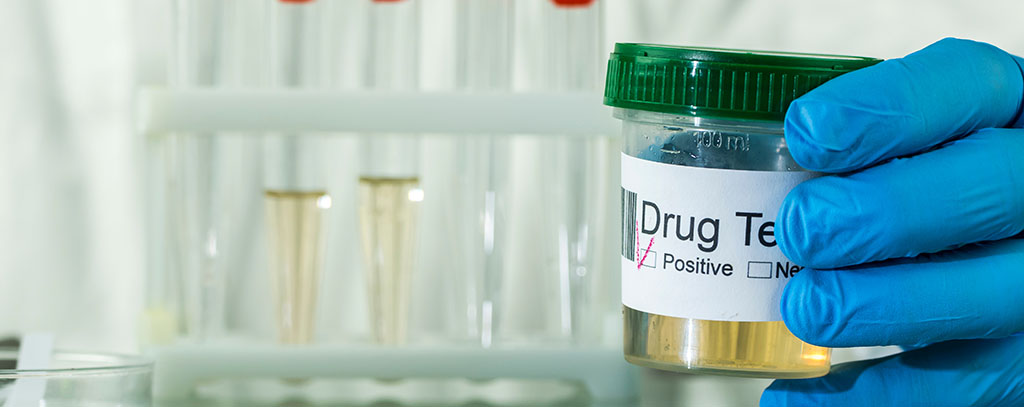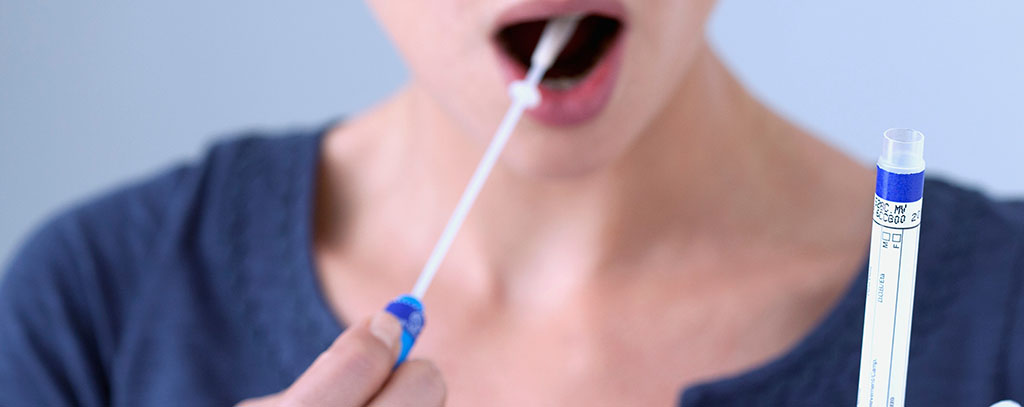


Drug Testing Supplies: Types, Benefits, and Usage
May 9, 2023


10 Panel Urine Drug Test with Expanded Opiate: Essential Guide
May 10, 2023Saliva drug tests in the workplace have become an increasingly popular method for detecting substance abuse among employees. Oral fluid testing is an attractive option for employers due to its non-invasive nature, cost-effectiveness and ability to detect substance abuse among employees.
In this blog post, we will explore the ins and outs of oral fluid drug testing, from its basic principles to its practical applications in the workplace. We'll discuss various aspects such as types of drugs detected by saliva tests, how to administer these tests properly, and both their advantages and disadvantages when used in professional settings.
Finally, we will delve into important considerations that companies should keep in mind when purchasing saliva drug testing supplies – ensuring accurate results while minimizing costs and training requirements. By understanding all facets of saliva drug tests in the workplace, employers can make informed decisions about implementing this effective strategy within their organizations.
Detection of Recent Substance Use
Saliva drug tests offer a significant advantage over traditional urine testing by detecting recent substance use more accurately. Oral fluid testing can detect drugs soon after ingestion and typically only detects them for 24 to 48 hours after use, providing a safety-focused approach that identifies employees who may be under the influence while on the job.
Short Window of Detection for Improved Workplace Safety
The short window of detection offered by oral fluid drug testing is particularly beneficial in ensuring workplace safety. Unlike urine tests, which can sometimes show positive results even days after an individual has consumed an illicit drug, saliva tests provide employers with information about whether their employees are currently under the influence or have recently used substances. This helps companies take immediate action to prevent accidents and maintain a safe working environment.
Identifying Employees Under the Influence During Work Hours
- Ease of administration: Saliva-based screenings are non-invasive and easy to administer compared to blood or urine samples, making it easier for employers to conduct random or routine workplace drug testing.
- Faster results: Oral fluid collection devices often deliver faster results than other methods like urine analysis, allowing employers to make informed decisions quickly when addressing potential substance abuse issues among their workforce.
- Better accuracy: The risk of false positives is significantly reduced with saliva tests due to its ability to detect specific parent compounds instead of metabolites found in other types of samples such as urine.
Incorporating saliva-based drug testing into workplace protocols can help employers maintain a secure and efficient workspace by ensuring that their staff are not using substances while on the job. Private employers can benefit from these tests as well as they can help identify employees who may need mental health services or substance abuse treatment. Additionally, confirmation testing by a medical review officer can provide further accuracy and reliability in the results.
The detection of recent substance use is an important step in improving workplace safety, as it allows for the identification of employees under the influence during work hours. To ensure compliance with SAMHSA guidelines and regulations, companies must update their drug-testing policies and train managers on saliva-based screening procedures.
SAMHSA Guidelines and Compliance
As a company looking to implement oral fluid drug testing in the workplace, it is essential to be aware of the guidelines established by the Substance Abuse and Mental Health Services Administration (SAMHSA). These guidelines advocate for the benefits and methods of oral fluid collection devices, ensuring that your workplace drug testing program remains compliant with industry standards.
Updating Company Drug-Testing Policies
To comply with SAMHSA's recommendations, employers must update their existing drug-testing policies to include provisions for oral fluid testing. This may involve revising current documentation or creating new policy documents that outline how saliva-based screenings will be conducted within your organization. It is crucial to consult with legal counsel when making these changes, as they can help ensure compliance with federal regulations such as those set forth by the Department of Transportation (DOT).
Training Managers on Saliva-Based Screening Procedures
- Educate: Ensure managers are well-informed about the advantages of using saliva tests over traditional urine tests. They should understand why this method has been chosen for your workplace and its role in maintaining a safe working environment.
- Demonstrate: Provide hands-on training sessions where managers can learn how to properly administer an oral fluid test. This includes instructing them on sample collection procedures, handling samples correctly during transportation, and understanding lab results once they have been processed.
- Maintain Open Communication: Encourage open communication between management teams regarding any concerns or questions related to implementing saliva-based screening programs. Open dialogue should be encouraged between management teams to address any worries or queries related to the implementation of saliva-based screening programs, so that all parties are aware and can tackle possible issues beforehand.
By adhering to SAMHSA guidelines and ensuring your company's drug-testing policies reflect these recommendations, you can confidently implement oral fluid testing in your workplace. This illustrates your business's dedication to confronting drug-related problems directly, while also maintaining a secure workplace for everyone.
It is essential for businesses to keep abreast of the newest SAMHSA regulations and make certain their drug screening practices meet all requirements. Moving on, let us explore the practical benefits of oral fluid collection in workplace drug tests.
Practical Benefits of Oral Fluid Collection
When it comes to workplace drug testing, oral fluid collection offers several practical advantages over traditional blood or urine sampling methods. These benefits include a more straightforward specimen collection process, simplified transportation logistics, and cost savings associated with reduced security measures required in alternative methods.
Reduced Tampering Opportunities during Sample Collection
Oral fluid drug testing reduces the chances of tampering significantly during specimen collection because employees collect samples while being observed by an employer representative. This direct observation eliminates the need for private restrooms or specialized facilities that are often necessary for urine tests, minimizing opportunities for adulteration or substitution of specimens. The result is a more reliable and accurate test outcome that employers can trust when making decisions about employee substance abuse issues.
Simplified Transportation Logistics due to Easy-to-Handle Liquid Samples
The ease of handling liquid samples in oral fluid testing also simplifies transportation logistics compared to other forms of workplace drug screening. Unlike blood samples, which require special containers and temperature-controlled storage conditions, saliva samples can be easily stored at room temperature without compromising their integrity. Additionally, shipping these non-hazardous materials does not necessitate any specific precautions or regulations like those needed for transporting biohazardous substances such as blood or urine.
- Easier sample storage: Saliva samples can be stored at room temperature without affecting their quality.
- No special shipping requirements: Non-hazardous saliva specimens do not require specific precautions when transported between locations.
- Faster turnaround times: Simplified logistics lead to quicker test results, enabling employers to make informed decisions more rapidly.
By implementing oral fluid testing in the workplace, companies can benefit from a streamlined process that offers greater accuracy and reliability than traditional methods. This improved approach helps maintain a safe working environment for all employees while reducing costs associated with specimen collection and transportation. It is important to note that oral fluid testing is also known as oral fluid drug testing or saliva drug testing.
The practical benefits of oral fluid collection are numerous, making it an ideal choice for companies looking to conduct accurate and reliable drug tests. SureHire's three-step process further ensures accuracy with a thorough examination procedure that includes lab-based confirmation testing.
Three-Step Process for Accurate Results
At Halux Diagnostic, we understand the importance of accurate and reliable drug testing results.
Rinsing Mouth Prior to Examination
The first step in our oral fluid drug testing process involves participants rinsing their mouths before taking part in the examination. This crucial measure helps remove any lingering substances or residues from food, drink, or tobacco products that may interfere with the test results.
Actual Examination Process
In this stage of workplace drug testing, employees provide an oral fluid sample by swabbing their mouth using a specially designed collection device. The collection process is non-invasive and can be easily observed by an employer representative without violating privacy concerns typically associated with urine tests. Moreover, it eliminates the need for gender-specific collectors or medical review officers during specimen collection.
- Ease of use: Oral fluid collection devices are user-friendly and require minimal training to administer effectively.
- Non-invasive method: Unlike blood draws or urine samples, saliva-based screenings do not cause discomfort or embarrassment for employees undergoing testing.
- Tamper-resistant design: Collection devices feature built-in security measures that prevent adulteration and ensure integrity throughout transportation and analysis stages.
Lab-Based Confirmation Testing
To guarantee accuracy in detecting illicit drugs such as opioids, amphetamines, marijuana (THC), and more, non-neagative oral fluid samples undergo lab-based confirmation testing following the Substance Abuse and Mental Health Services Administration (SAMHSA) guidelines. This final step in our three-stage process ensures that results are not only accurate but also legally defensible, providing employers with peace of mind when making decisions based on test outcomes.
By adopting Halux Diagnostic's comprehensive approach to workplace drug testing, companies can ensure a safer work environment while maintaining compliance with industry regulations and best practices. Our oral fluid testing is a reliable alternative to urine testing and is an effective way to detect substance abuse in the workplace. Private employers can benefit from our mental health services administration and confirmation testing to ensure accurate results. Contact us today to learn more about our services.
The Three-step Process for Accurate Results is an efficient and reliable way to ensure that the results of a saliva drug test are accurate. With its adoption in Canadian and U.S Workplaces, organizations can benefit from quantitative, court-admissible test results as well as potential inclusion by the Department of Transportation.
Adoption of Oral Fluid Drug Testing in Canadian and U.S. Workplaces
As oral fluid drug testing gains popularity in both Canadian and U.S. workplaces, employers can obtain quantitative, court-admissible test results that help maintain a safe working environment for all employees. The Department of Transportation is currently considering including oral fluid testing as an acceptable workplace drug-testing method alongside traditional urine analysis options.
Quantitative, Court-Admissible Test Results
The accuracy of saliva drug tests has improved significantly over the years, making them more reliable for detecting recent substance use. Oral fluid testing provides quantitative results that are admissible in court proceedings if necessary. This means that employers can confidently rely on these tests to make informed decisions about their employees' fitness for duty without worrying about potential legal challenges.
Potential Inclusion by the Department of Transportation
The Department of Transportation (DOT) is currently evaluating whether to include oral fluid testing as part of its approved workplace drug-testing methods. If adopted, this would further solidify the acceptance and credibility of saliva-based screenings among private employers across various industries who follow DOT guidelines or look up to them as best practices when implementing their own policies.
- Increase Acceptance: Inclusion by the DOT would likely lead to increased adoption rates among companies looking for effective ways to detect illicit drugs within their workforce while maintaining compliance with federal regulations.
- Enhanced Credibility: DOT approval would also enhance the credibility of oral fluid testing as a viable alternative to traditional urine tests, encouraging more employers to consider this method for their workplace drug-testing programs.
- Better Compliance: Companies that already use saliva-based screenings may find it easier to comply with updated DOT guidelines if they choose to adopt them in the future. This could lead to improved safety and compliance outcomes across various industries.
Incorporating oral fluid drug testing into workplace policies can help create safer environments by detecting recent substance use among employees. As these tests gain acceptance in both Canadian and U.S. workplaces, companies can confidently rely on accurate, court-admissible results while maintaining compliance with federal regulations.
The use of saliva drug testing in the job setting has seen an increase in both Canada and America, offering employers dependable, legally-acceptable results to guarantee a safe working atmosphere. Moving forward, it is important for companies to consider implementing comprehensive programs that provide resources for addressing addiction issues and creating an even safer workplace environment.
Implementing Comprehensive Workplace Programs
In addition to implementing effective screening methods like saliva tests, companies should also consider using various tools, programs, and resources designed to curb addiction issues within their workforce - creating healthier environments overall while reducing potential risks associated with substance abuse on job sites.
Tools and Resources for Addressing Addiction Issues
Employers can benefit from a range of available resources that help address addiction problems among employees. For instance, SAMHSA's Workplace Toolkit offers guidance on how to create a drug-free workplace program tailored to the specific needs of your organization. Additionally, employers may want to consider offering access to mental health services administration or partnering with local treatment centers for support.
- EAPs: Employee Assistance Programs (EAPs) provide confidential counseling and referral services for employees struggling with personal issues such as substance abuse or mental health concerns.
- Mental Health Services Administration: Providing access to professional mental health care can help identify underlying issues contributing to an employee's substance use disorder.
- Treatment Center Partnerships: Collaborating with local treatment facilities ensures that employees have easy access to appropriate care when needed.
Creating a Safer Work Environment Through Comprehensive Programs
A comprehensive approach towards addressing illicit drug use in the workplace not only includes effective testing methods but also focuses on fostering a supportive environment where employees feel comfortable seeking assistance. This involves establishing clear policies regarding substance abuse, providing education about the dangers of drug use, and promoting open communication between management and staff members.
- Policies & Procedures: Develop and implement clear, consistent policies outlining the company's stance on substance abuse, including consequences for violations.
- Education & Training: Educate employees about the risks associated with drug use and train managers to recognize signs of potential substance abuse among their team members. The National Institute on Drug Abuse offers valuable resources in this regard.
- Open Communication: Encourage open dialogue between management and staff regarding addiction concerns, ensuring that employees feel supported when seeking help or reporting issues related to substance use disorders.
Taking a comprehensive approach towards workplace drug testing by incorporating oral fluid drug testing methods alongside other supportive measures can create a safer work environment while addressing employee needs effectively. Encouraging open dialogue between management and staff on addiction issues, in addition to comprehensive workplace drug testing that includes oral fluid tests, can foster employee well-being and satisfaction while helping to preserve productivity.
FAQs in Relation to Saliva Drug Tests in the Workplace
Why Do Companies Conduct Saliva Drug Tests?
Companies conduct saliva drug tests to maintain workplace safety, ensure employee productivity, and comply with regulatory requirements. Oral fluid testing is non-invasive, easy to administer, and provides quick results for recent substance use. This helps employers identify employees under the influence during work hours and take appropriate action.
What Can Be Detected in a Saliva Test?
A saliva test can detect various substances such as marijuana (THC), cocaine, amphetamines, methamphetamine, opioids (including prescription painkillers), benzodiazepines, barbiturates, and phencyclidine (PCP). The detection window varies depending on the specific substance but typically ranges from 5 minutes to 48 hours after ingestion.
What Are the Disadvantages of Oral Fluid Testing?
The main disadvantages of oral fluid testing include its short detection window compared to other methods like urine or hair analysis. Additionally, some medications may cause false-positive results if not properly accounted for during lab-based confirmation testing. However, advances in technology have improved accuracy rates over time.
Why Should Drug Testing Not Be Allowed in the Workplace?
Critics argue that workplace drug testing infringes on personal privacy rights and could lead to discrimination against individuals who use legal substances for medical reasons. They also claim that focusing solely on punitive measures might discourage employees from seeking help for addiction issues rather than promoting a supportive environment. The ACLU has taken a stance against workplace drug testing.
Why 10 Panel Saliva Drug Test?
The 10-Panel Saliva Drug Test, also known as the Oral Mouth Swab Drug Test, is a common method used by companies for workplace drug screening. It can detect ten different substances, including marijuana, cocaine, amphetamines, opioids, benzodiazepines, and more. Its ease of use and ability to provide quick results make it a popular choice for employers seeking to ensure a drug-free work environment.
Conclusion
In summary, saliva drug tests are an economical and reliable way to detect employee drug use with rapid results and non-invasive collection procedures; however, there are drawbacks such as a narrow detection window and the possibility of tampering or contamination. They offer quick turnaround times for results and non-invasive collection methods. However, there are limitations to using saliva tests such as the limited detection window and potential for tampering or contamination.
If you're looking to purchase high-quality saliva drug testing supplies, consider Halux Diagnostic. Our selection of saliva drug testing supplies is reliable, economical, and straightforward to utilize. Plus, we offer training resources for administrators so that your workplace can implement these tests with confidence.
Visit our website today to learn more about our selection of saliva drug testing supplies!





